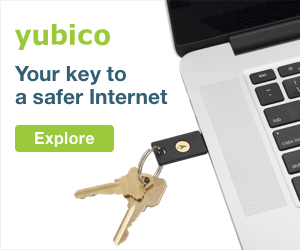Nowadays, free public Wi-Fi is widely and readily available in larger cities—airports, restaurants, coffee shops, libraries, public transport, hotel rooms, you name it. Of course, we all know jumping on a free Internet connection can be a convenient way to access online accounts, catch up on work, and check emails while on the go. However, the security risks should not be forgotten. While the best way to protect your information is to avoid accessing sensitive information or performing sensitive transactions when connected to public Wi-Fi, there are additional measures you should be

Nearly a quarter of Americans using public and unsecured
Why is public Wi-Fi vulnerable to cyber attack?
The average free public
Various reasons make public
Some wireless networks may use older standards for encryption, which can cause security problems. Wireless Encryption
Another issue that can arise when attempting to use free public
With
Signs you may be logged on to a rogue Wi-Fi
Devices are known to probe for known
If you’re away, say at a coffee shop, and all of a sudden your computer shows that you're connected to your home network, chances are someone could have caught your computer’s broadcast request. In some cases, if you’re browsing a website that you know should be
Measures you can take to stay protected on public Wi-Fi
Generally speaking, as a precaution, you shouldn’t engage in any sort of sensitive web browsing, such as accessing your bank account or entering payment details when connected to public
- Never use public Wi-Fi networks to access sensitive information. If you need to get online to browse for directions or do something else that is less sensitive, you can do it. But if you’re trying to pay your bills or buy something. It can wait. If it’s a dire situation, or if you regularly use public
Wi-Fi, using a Virtual PrivateNetwork (VPN) is a must. You can find a variety of trusted VPN services online, but if you want a good service you’ll haveto pay. - If you need to use public
Wi-Fi to do work and if your company offers VPN access, use it. VPN creates a private network for you to shuttle information back and forth, adding an extra layer of security toyour connection. - Only browse websites that start with HTTPS and avoid websites that start with HTTP while on public
Wi-Fi. Websites that start with HTTPS are encrypted, adding an extra layer of security and making your browsing more secure. If you connect to an unsecuredWi-Fi network, and use regular HTTP instead of HTTPS, your traffic is visible if hackers are snooping around inthe network. - Configure the wireless settings on your devices to not automatically connect to available
Wi-Fi hotspots. This ensures that you do not unknowingly connect to public networks. You can do this by turning off the “Connect Automatically” feature on your computers so they don’tauto-connect and search for knownWi-Fi networks. Doing this will prevent your computer from broadcasting to the world that it’s trying to connect to aWi-Fi network and allow an attacker tospoof that. - Consider using a privacy screen if you must access sensitive information in public areas—hackers are anywhere, and they aren’t afraid to use any means necessary to access
your information. - Lastly, treat and protect your mobile devices such as smart phones and tablets with the same precautions you would your laptop or desktop computer when you join a
Wi-Fi network.

